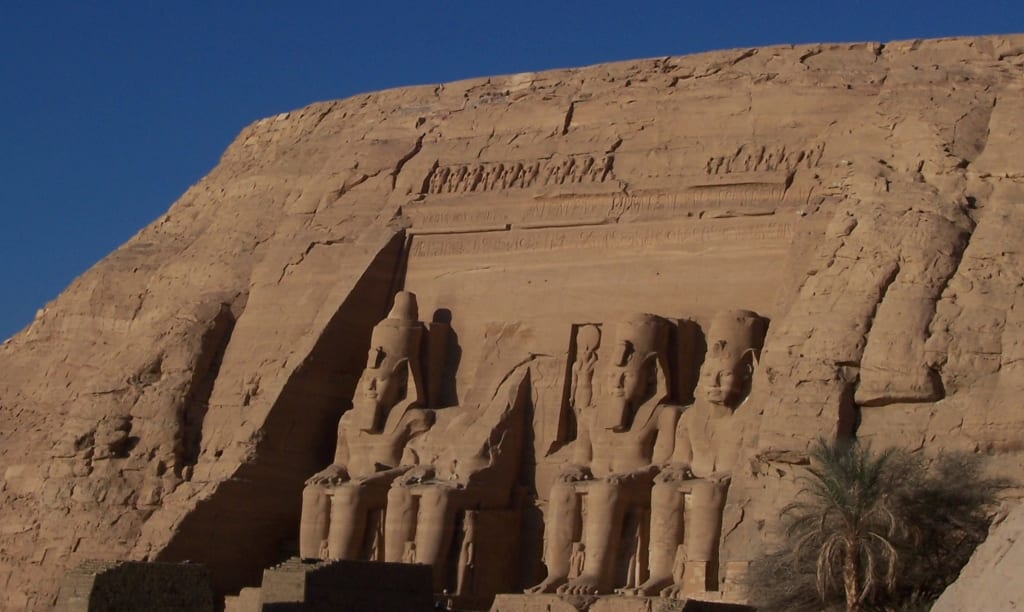A Passport Fit For a Pharaoh
Everyone who travels overseas needs the right documentation — even 3,000-year-old mummies

Ramses II is known for many things — he was a master builder, a mighty warrior, and one of the greatest Pharaohs. For 66 years, Ramses II ruled Egypt, and he left his stamp all over the country. His legends are larger than life, as are the monuments he created in his image.
And in 1976, Ramses II added another story to his legend. He became the only Pharaoh to hold a passport.
No Rest for the Great Pharaoh
Upon his death at the ripe old age of 90, Ramses II was originally laid to rest in a grand tomb in the Valley of the Kings. Looters were rampant, and the tombs were easy pickings. Thus Ramses II's eternal slumber was spoilt. To thwart the looters, priests moved his body multiple times, like musical chairs — but with a sarcophagus.
For prosperity, the priests recorded each new digs where Ramses II was set up. First, Ramses II moved back home to be interred alongside his father, Seti I. Father and son spent 80 years together before it was time for Ramses II to move out of home. This time, Ramses II bunked in with Ahmose-Inhapi. Their shared eternal slumber arrangement stayed in place for 40 years.
At the end of the New Kingdom (1077 BC), the High Priests of Amun used the guise of “looters” to create the Royal Cache. The Priests systematically cleared out the tombs in the Valley of the Kings and relocated the mummies. The official story was that the mummies needed both restoration and protection. During the relocation, the treasure that remained failed to make it to the Royal Cache. Someone got a great five-finger discount.
In 1881, the secret Royal Cache at Deir el-Bahri was discovered by archeologists. Inside, the Royal mummies were tucked uptight. In a wooden coffin was the mummy of Ramses II. Egyptologists believe the coffin originally belonged to Horemheb, the last ruler of the 18th Dynasty, and had been repurposed to house Ramses II. Ramses II’s mummy was again forced to pack up and move house, this time to the Egyptian Museum in Cairo.
Mummy in Decay
In 1974, Dr. Maurice Bucaille from the French Society of Egyptology conducted forensic examinations of the Royal mummies housed at the Cairo museum. Bucaille discovered the Royal mummies were starting to deteriorate. In particular, Ramses II was a little worse for wear.
The moist heat of the Cairo museum wasn’t playing nicely with the mummies. The environment within the museum was vastly different from the Valley of the Kings, where the dry heat helped with the ongoing preservation of the Royal mummies. Another contributing factor was that the Royal mummies had been stripped of their protective layers. The naked mummies became a petri dish breeding bacteria.
As a result of these changed conditions, a fungus was causing Ramsess II to decay rapidly — more rapidly, that is, than a person deceased and preserved for the last 3,000 years should. Buccaille prescribed a treatment plan which required a trip to Paris.
Mummy With a Passport
Getting Ramses II to Paris was not an easy task. First, the government of Egypt needed to be convinced. Ancient looters are not the only ones responsible for plundering Egypt’s treasures. Repeated requests for the return of the Rosetta Stone and the bust of Nefertiti have been ignored. There was a deep-seated reluctance to allow mummies to travel abroad — what if they too failed to return home?
French law proved to be both a hindrance and the answer to the problem. All people entering France, including the deceased, must carry a valid passport. That included Ramses II. The Egyptian government drew up a special ‘passport.’ It fulfilled France’s documentation requirements and protected Egypt’s rights as the owner of the mummy. Like a regular passport, the travel documents included a photograph for identification purposes. As Pharaoh is no longer a recognized profession, Ramses II had his occupation listed as King (deceased).
In September 1976, Ramses II traveled on a French military aircraft to Le Bourget Airport. On arrival, Ramses II was given a greeting befitting a King. The Garde Republicaine and an air force contingent presented arms as the crate containing Ramses II was transferred from the aircraft. Secretary of State for Universities Alice Saunter-Seite was also in attendance and made a statement on the honor and pleasure it was to be entrusted with the care and restoration of Ramses II.
From the airport, Ramses II headed straight to the Paris Ethnological Museum.
Nuclear Pharaoh
In a sterile room, French scientists carried out many tests before undertaking the restoration work. First up, the body was x-rayed, then samples were studied under a microscope. The French scientists announced that the threat of decay was coming from “two kinds of insects, 60 types of fungi and an undisclosed great number of bacteria.”
The samples taken from Ramses II allowed Professor Pierre-Fernand Ceccaldi, a forensic scientist, to study the medical and genetic history of the Pharaoh. Ceccaldi determined that Ramses II was about five foot seven; he had arthritis and an infected tooth, which caused a significant abscess.
Once the restoration of the mummy was complete, Ramses II was transferred to the Saclay, an atomic facility for irradiation. The gamma rays sterilized the mummy, preventing both fungi and bacteria from further growth. Bucaille was adamant that the treatment was bungled. He believed the gamma radiation had roasted Ramses II. Regardless, post-atomic blasting, Ramses II was sealed up in an airtight transparent sarcophagus, then returned to Egypt and the Cairo museum.
The trip to Paris remains Ramses II’s only trip abroad. He’s never needed to use his passport again.
***
AUTHOR'S NOTES: It should be noted that the image of Ramses II’s passport circulating is a fake. That image was an artist rendition created by Heritage Daily as a visual to accompany their article. Passports issued in 1974 looked vastly different from the mock-up, which includes more modern holographic imagery.
Ramses II’s real ‘passport’ has not been made available for public perusal.
There’s also a bit of speculation that Professor Pierre-Fernand Ceccaldi made a startling claim, “Hair, astonishingly preserved, showed some complementary data — especially about pigmentation: Ramses II was a ginger-haired cymnotriche leucoderma.” In non-forensic speak, that means ‘a redhead with white skin’.
Ceccaldi is also reported to have claimed, “In ancient Egypt people with red hair were associated with the deity Set, the slayer of Osiris, and the name of Ramesses II’s father, Seti I, means follower of Seth.”
These two quotes (and only these quotes) have circulated the internet without reference to a primary source. The nugget of truth is in the statement about Set. It’s provided to make the sensational claim of Ramses II as a redhead seem valid.
Call me skeptical, but if Ramses II was a true redhead, I’m pretty sure there would be a lot more information (and headlines!) than a quote without verification.
About the Creator
Sandi Parsons
Sandi Parsons lives and breathes stories as a reader, writer, and storyteller. Subscribe to my newsletter & receive my free ebook The Last Walk → https://bit.ly/3cGvsPB







Comments
There are no comments for this story
Be the first to respond and start the conversation.